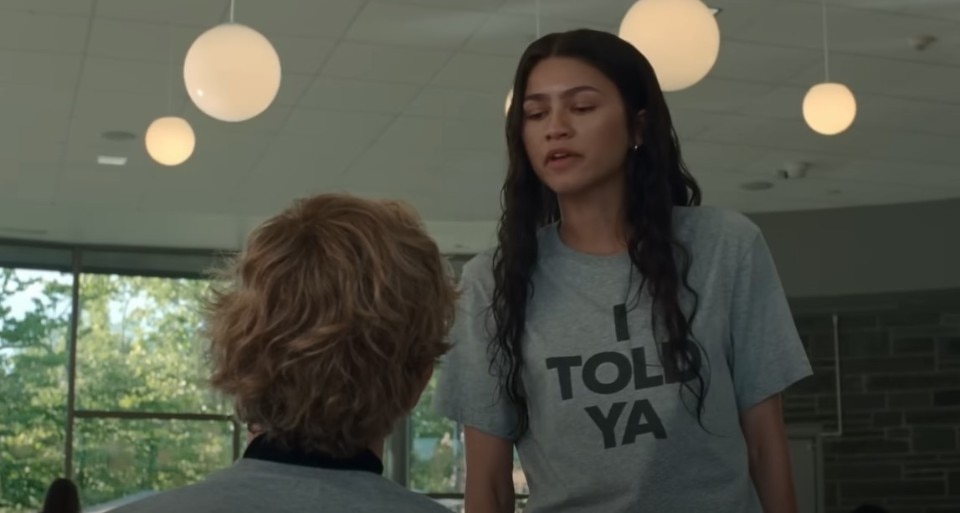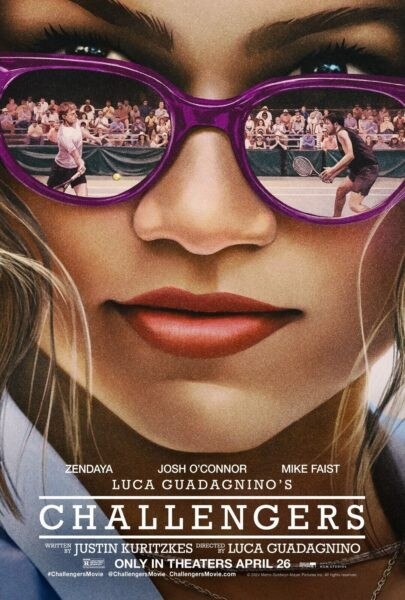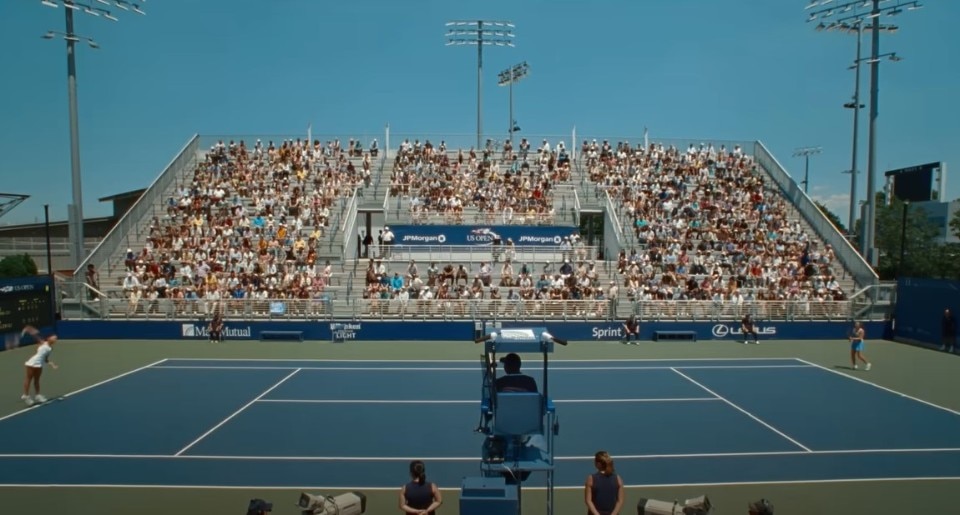In Luca Guadagnino’s latest film, Challengers, a recurring theme emerges frequently and subtly: deep communion with someone is only possible for a fleeting moment – fifteen seconds. During this brief window, people can truly connect, share meaningful experiences, and gain insight into each other’s lives, whether they are opponents, partners, or even… spectators.
To illustrate this concept, Guadagnino structures the film into short, syncopated sequences with sudden frame or scene changes, directing attention to the three protagonists and the individual truths each believes they know about their own story. The recurring theme of the triangle – representing the protagonists’ love, temporal progression through flashbacks, and subjective understanding of events – is woven into every scene, ideally dividing the screen into three areas – a player’s court, the net, and the opponent’s court – through an interplay that occurs across most of the proposed interactions.

Throughout the film, whenever the characters appear to be in conflict or struggling to connect, there is always something physically separating them: a threshold between two rooms, a small table, a bed, another person, or even their own sporting achievements. However, amidst these moments, there are shining examples of the “fifteen seconds” mentioned earlier – brief exchanges, both figurative and literal, where the protagonists manage to bridge the gap. During these instances, nothing stands between them, and the playing field becomes a shared space. The pace quickens, the film takes off, and it becomes impossible for the viewer to look away. Spaces seem to shrink, and the camera lingers on faces and details, as faces touch, hands shake, and cuts transition rapidly, as fast as a yellow ball on a green court.
Are we still talking about tennis?
This sharp visual division is further accentuated by a color correction that heightens the materiality of both bodies and environments, using intense tones and sensory illusions that almost evoke the acrid smell of sweat. This effect is complemented by a meticulously crafted sound design, always precise, accurate, and never out of place. From period-specific songs that evoke vivid images of the flashbacks to ambient noises and the pulsating soundtrack by Trent Reznor and Atticus Ross, the audio seamlessly integrates with the unfolding narrative. Their intense tracks seem to weave through the unraveling moments of the story, immersing the audience, actors, and director in a trance-like experience reminiscent of a rave. This is electronic music born in the 1980s – pounding, repetitive, and hypnotic – allowing bodies to communicate where words cannot. Footsteps, the rhythmic thud of a bat hitting the floor, the bouncing ball, and the cries and moans of the characters all become rhythm, building tension, heightening anticipation, and adding depth to the visual narrative.

On the other hand, when dialogue takes center stage, the characters come closer and clash in sharp verbal exchanges that are both brilliant and believable, often punctuated by moments of silence. These exchanges condense layered thoughts, quickly transmitted from one protagonist to another, disrupting already tense balances like crashing cymbals. Tennis is always at the heart of it all, serving as a powerful metaphor for ambition and revenge, both in personal life and on the court. The characters move between courts, lives, homes, and frames, believing themselves unseen. The narrative unfolds through conversations with at least three layers of interpretation: sportsmanship, personal aspirations, and courtship, where each believes they have a complete understanding of the situation. Tennis remains a constant topic of discussion, yet paradoxically, it is never truly discussed.
Where are you sleeping tonight?
Each encounter between Tashi Duncan, Patrick Zweig, and Art Donaldson resembles a sliding door, marking shifts in their relationship dynamics, social standings, and perspectives on life. What initially appears to be a shared experience – a party attended by several up-and-coming tennis stars – quickly becomes a turning point for some and a stumbling block for others. From that moment on, the trio is never quite on equal footing again, despite the intersecting paths of their lives.
The recurring theme of the triangle is woven into every scene, ideally dividing the screen into three areas – a player’s court, the net, and the opponent’s court – through an interplay that occurs across most of the proposed interactions.

Over thirteen years marked by varying degrees of injury and romantic entanglements, the three characters seem to grow closer, at least superficially, as they reveal their true natures over time. Economic circumstances fluctuate, as do the settings in which their encounters – or clashes – take place. Guided by Guadagnino’s direction, these environments are transformed into symbolic spaces that evoke powerful emotions in the viewer: a seemingly pristine hotel room, symbolizing success for a couple in crisis, or the back seat of a car, representing a lapse in judgment, a clandestine encounter that should never have happened. Everything becomes story.
Night and wind shake people’s spirits and beliefs. Day and calm try to maintain the status quo. The three manage to talk only when they are not in public (in the sauna, in the bedroom, in the car). Sex becomes both an excuse and a demand, while meals together are both a challenge and a trap. In the midst of the immense noise of misunderstandings, what is left? Exactly those fifteen seconds of idyll, when understanding can only be found with a racket in hand, on the solitary neutral ground that spans the entire film: the tennis court.
Opening image: Luca Guadagnino, Challengers, 2024


